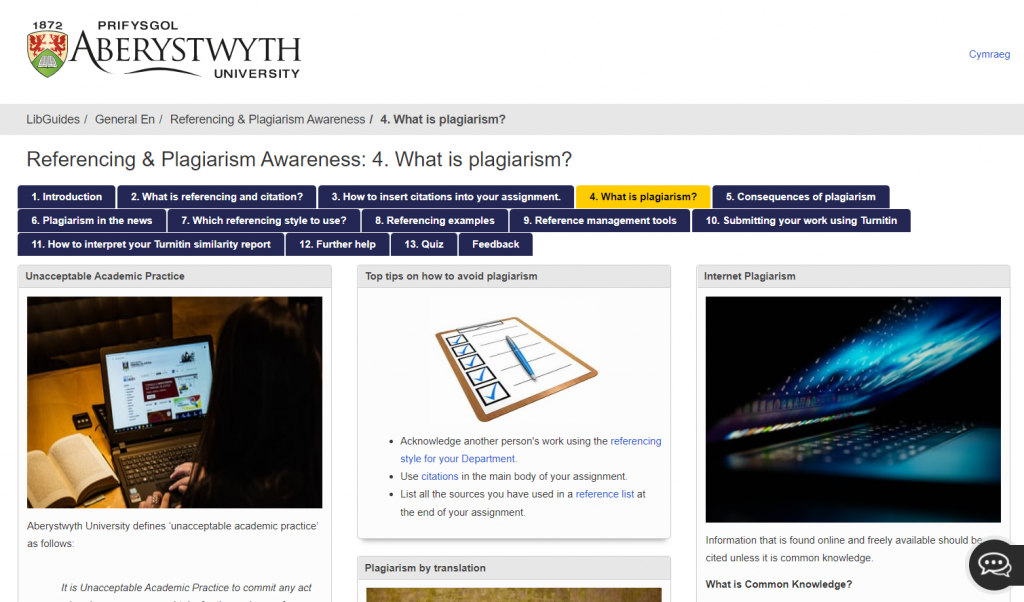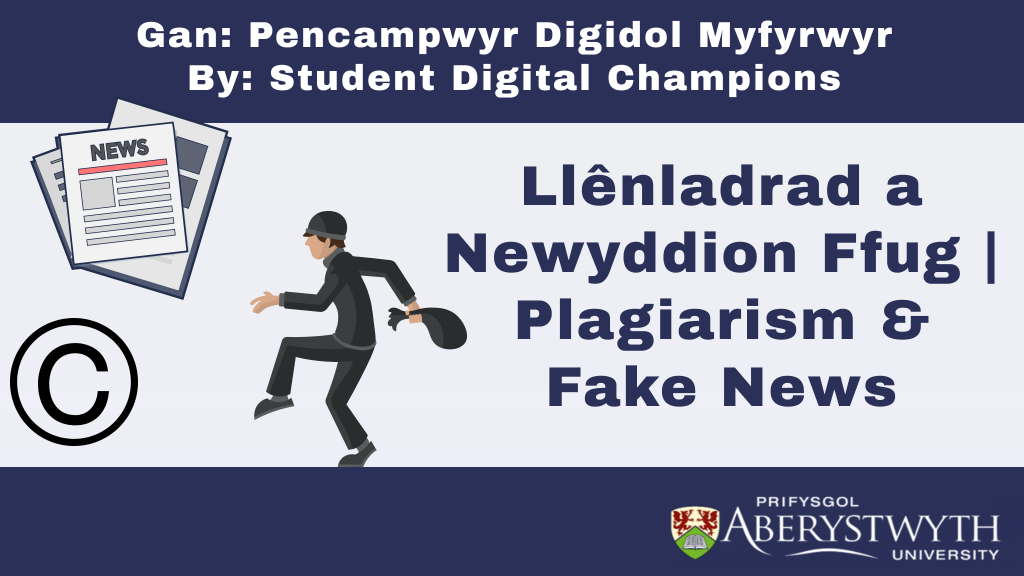
Don’t be a copycat!
Welcome to part 2 of our series on fake news and plagiarism. In part one we looked at the world of smoke and mirrors that is fake news. In this part, we will go over the many forms of plagiarism, how to avoid accidental plagiarism, and ways you can combat deliberate acts of plagiarism.
What is plagiarism?
Plagiarism is the act of presenting someone else’s work as if it were your own without giving credit to the original author(s) of the work. In other words, plagiarism is a form of theft but instead of physical property it is the idea of someone else, or intellectual property. There are several ways of committing plagiarism, many accidental and others intentional. Fortunately, virtually every course at Aberystwyth University goes over the basics of academic integrity as well as the proper referencing scheme to use for your course. More information on plagiarism can be found through the LibGuides page on plagiarism.

The different forms of plagiarism
Plagiarism can come in many different forms, with some being harder to detect than others. The first, and arguably most severe, is known as global plagiarism. This is when one copies the entirety of a work and tries to pass it off as their own. Aberystwyth University has a zero-tolerance policy for this and all forms of plagiarism.
The next form of plagiarism is called verbatim plagiarism, which is when one copies someone else’s words, a part of the work such as a quote, without giving the original author proper credit. Many students may do this accidently because they are unfamiliar with academic reference techniques. If you are struggling with creating references for your topic, then don’t worry, help is always available! We recommend that you speak to your module co-ordinator(s), personal tutor, or subject librarian to get the help you need. While they won’t be able to edit your work for you, they will be able to point you in the right direction. Double-check your work and make sure you give all your sources the credit they deserve.
Spotting plagiarism
With all the different forms of plagiarism, it can be difficult to know where to start when proof-reading. If you read a quote without quotation marks in a news article and get the feeling of déjà vu, try Google searching it. If that quote appears somewhere else, then there’s a good chance it has been plagiarised by the news article’s author. If you’re unsure where a quote has originated from or you don’t have the time to dig through Google search results, then let services like Quetext do the work for you. Quetext is a free plagiarism checker that searches the web to pinpoint the origins of a quote. Simply copy and paste the text you want to check and Quetext will show you the results. It is vital that you check for plagiarism when using a source that has not been peer reviewed such as a news article as you may accidently share something that is stolen without realizing it. When using a source, always cite the original work.
Don’t plagiarise yourself
We’ve talked about the ways one can plagiarise the works of others, but you can also plagiarise yourself. Self-plagiarism is when you copy your OWN writing, regardless of if you mean to or not. You might be thinking ‘the work is mine so I’m not stealing from anybody’. However, it is far from harmless. Aberystwyth University does not allow for your work to have ‘significant overlap’, which is another way of saying that you cannot reuse your ideas from earlier assignments. Many students do not intend to self-plagiarise; we all have a unique style of writing so it’s easy to present a point in your writing the same way you did before. To combat this, you can go over your previously submitted works to check for similarities. Look back at your previously submitted assignments on Blackboard to double-check everything before submitting new work.
LibGuides
Aberystwyth University has lots of resources to help you with referencing. As mentioned in part one, LibGuides is a fantastic free resource for students to use. I personally recommend reading the page on Plagiarism in the News which will provide you with examples of plagiarism that have made the news headlines. You can also test your knowledge of referencing and plagiarism by trying out the Referencing & Plagiarism Awareness Quiz.
Making sense of it all
Plagiarism is such a complicated topic that’s it’s almost impossible to go over everything in one go. This blog post is just a helpful overview that covers the basics you need to know for your degree. For more detailed information on plagiarism, including information on fake news, please visit the LibGuides mentioned above and also my new LinkedIn Learning Collection on Plagiarism and Fake News.


